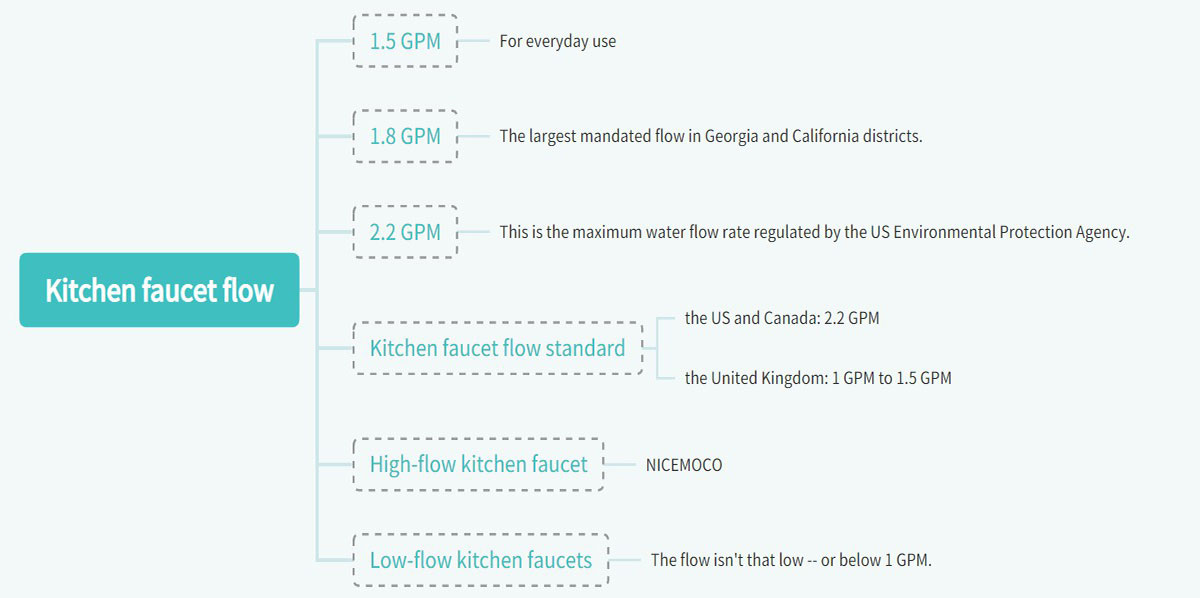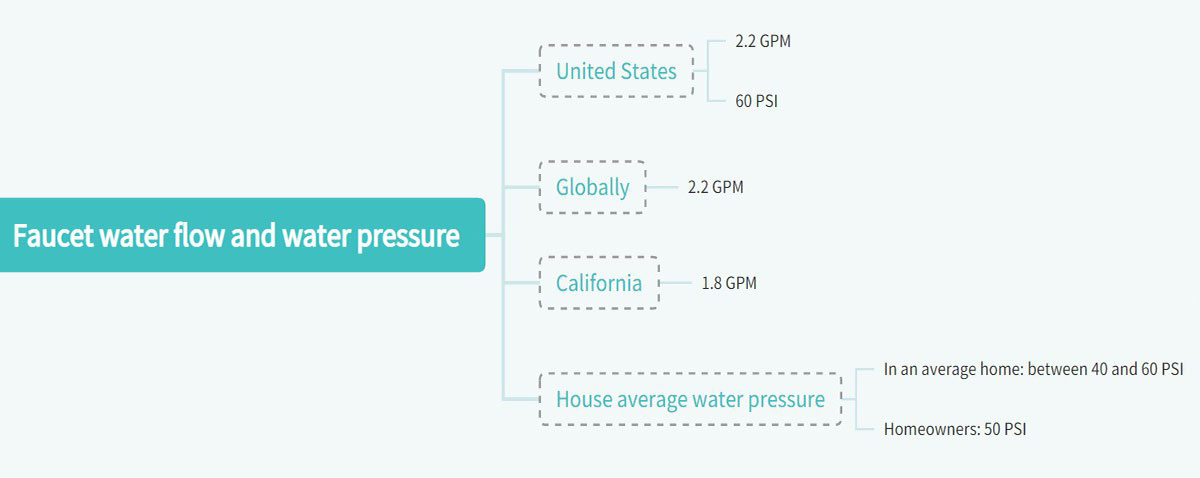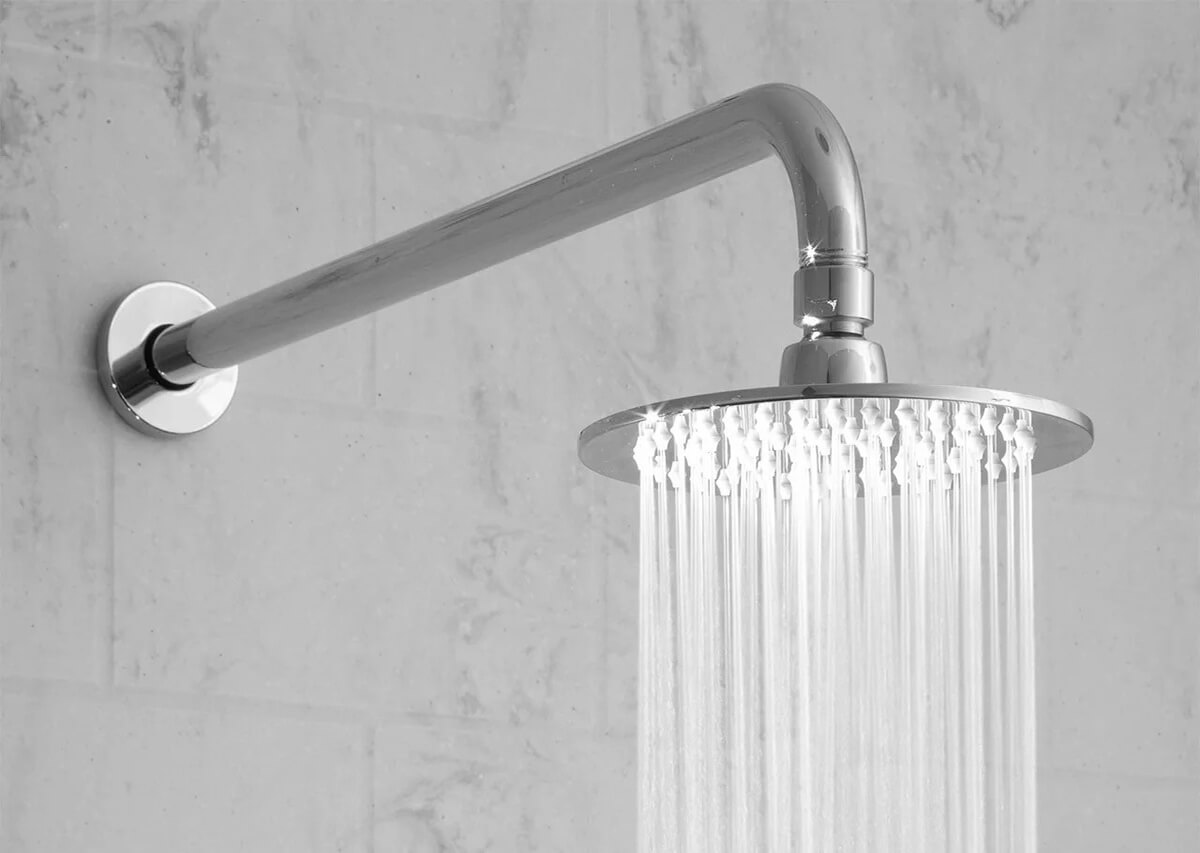Understanding flow rates is an important part of solving many of the problems associated with inefficient homes, inadequate water pressure, and high water bills. While flow is a key part of every water installation in your home, it’s especially important for your kitchen sink faucet.
1. What is faucet flow
Flow is an important aspect of all water-related appliances in your home, such as faucets. Specifically, we define flow as “the flow of water flowing from a source”. Flow determines water pressure, which in turn will let you know if a particular unit is adding to your water bill.
Now, there are a few more important traffic-related terms you need to understand. they are:
- Aerator – this is a device that controls the flow of water from your sprinklers and faucets
- GPM – GPM, or gallons per minute, measures the number of gallons that flow from a water fixture per minute
- PSI – Pounds per square inch (PSI) is a measurement of the pressure of a liquid, such as water
As mentioned earlier, faucet flow represents the amount of water that flows from shower heads and faucets in a given period of time. Specifically, it measures the velocity of water being ejected from the source.
Many people tend to ignore the flow of water fixtures, even though it has important implications for homeowners. Water consumers should understand that it can help determine the overall functionality of their water system.
If the water is not dripping or bursting, everything is normal. However, if you find that your hot water runs out quickly, it could indicate a problem with your home’s water flow. If the flow rate does not match the water softener you are using, you may experience interruptions in your clean water supply.
(Another related post: Kitchen Faucet: An Ultimate FAQ Guide)
2. Kitchen faucet flow
Kitchen faucets are used a lot, especially for washing dishes and preparing food. That’s why it’s crucial to keep your faucets in top condition. One thing you need to do is regulate the flow rate of the water running through them. In the United States, kitchen faucets have a maximum flow rate of 2.2 GPM. Reduced water flows in areas subject to environmental regulations. Let’s take California as an example again, where the water flows at 1.8 GPM.
1) Is a 1.5 GPM kitchen faucet enough?
For everyday use, a kitchen faucet with a water flow of 1.5 GPM is acceptable. So if you only use your kitchen faucet for washing dishes, drinking water, and washing your hands, this specific flow rate should be enough. The difference between it and a 2.2-GPM faucet isn’t all that noticeable either, especially if you’re less keen.
2) Is 1.8 GPM good for a kitchen faucet?
A kitchen faucet with a water flow of 1.8 GPM is more than adequate. A maximum flow rate is set for environmentally controlled areas such as Georgia and California. People out there are able to maximize the performance of their faucets for everyday kitchen chores.
3) Is a kitchen faucet with a flow rate of 2.2 GPM good enough?
Technically, 2.2 GPM is more than enough for kitchen use. This is the maximum water flow rate regulated by the US Environmental Protection Agency. It should be noted that not all households need such a powerful kitchen faucet.
(Another related post: How to Identify Your Kitchen Faucet Brand?)
4) Kitchen faucet flow standard
Standards for kitchen tap flow are not included. Countries differ on this issue. Kitchen and toilet faucets in the US and Canada have a maximum flow rate of 2.2 GPM. At the same time, the United Kingdom raised the water flow standard for kitchen taps from 1 GPM to 1.5 GPM.
5) High-flow kitchen faucet
A kitchen faucet with a high flow can provide more water when needed. Of course, there are situations where you want to maximize the flow of water out of the spout, especially if you’re running serious errands. Many faucets exist today. The most common are drop-down, pull-up, single-handle, and double-handle. However, the type of faucet does not determine the flow. It really depends on how they are constructed.
If you are looking for a high-flow kitchen faucet then you should check out the (nicemoco.com) regulations. It is an international brand of high-end kitchen faucets, automatic rinsers, and custom DIY kits. NICEMOCO is also a famous manufacturer of pull-out kitchen faucets. In addition to the high flow threshold, these faucets also have the following features:
- Water Temperature LED Panel
- Infrared Spout Sensor Activation
- Timeout Protection
- Manual and Induction Dual Mode Operation
We recommend you check out these high-flow kitchen faucets from NICEMOCO.
6) Low-flow kitchen faucets
Families usually don’t need high-flow kitchen faucets. Likewise, if your kitchen’s daily use is just washing your hands and preparing food, you don’t need to install a high-flow faucet. Just make sure the flow isn’t that low — or below 1 GPM. Likewise, you can choose from various types of faucets for your kitchen. From pull-out to commercial types, you can use them freely. Just make sure you can check their specs before buying.
(Another related post: What are the Best Materials for Bathroom Faucets?)
3. Faucet water flow and water pressure
Flow rate and water pressure may sound similar. However, you should not interchange these terms. They refer to different important aspects of understanding the overall efficiency of the water supply system. Water pressure is defined as the force required to push water through valves, pipes, and passages. Pressure is necessary if there are passages involving height and height.
1) Typical faucet flow: how much water does the faucet use per minute?
In the United States, bathroom and kitchen faucets have a maximum flow rate of 2.2 GPM and a pressure of 60 PSI. Globally, faucets are said to have a flow rate of 1 to 2.2 GPM.
However, some regions have stricter regulations. An example of this is California, where the flow rate is 1.8 GPM. Interestingly, the bathroom faucet has a slightly slower flow rate than the kitchen faucet. So is their water pressure.
2) House average water pressure
Water pressure is a precise measurement of the force exerted to move water. In an average home, the water pressure is between 40 and 60 PSI. Homeowners tend to customize the water pressure to around 50 PSI because it meets the needs of their respective families.
4. Factors affecting kitchen faucet water flow
The following are factors affecting the water flow of houses.
1) Flow by household size: faucet GPM
The flow rate of water is measured in gallons per minute (GPM). In simple terms, it measures the gallons per minute a faucet can produce. According to multiple water contractors, there are many factors that can affect the flow from your faucets. This includes family size. The average family has a maximum of four people; not only that but your family is already considered a large family.
But having a large family doesn’t mean your water flow is low. If everyone in your home is using water at the same time, the flow rate will be lower. So even if you have a small home, the flow of water to your property can still be affected if multiple faucets and showers are running at the same time.
2) Size of your property
Another factor that affects traffic is the size of your property. There are many online calculators that will allow you to figure out your home’s water flow based on its square footage. Meanwhile, the average incoming water pressure for a standard home size is about 45 PSI. This should not exceed 60 PSI. You’ll notice that professional plumbers prefer to set the pressure regulator at 45 to 50 PSI. Considering that all homes are the same, this means that the pressure regulator in your home should be configured correctly.
For example, the standard square footage of a US home is approximately 2,300 square feet. Here, you can expect larger homes to experience lower traffic.
(Another related post: A Complete Guide for Buying Faucets)
5. Bathroom faucet gross margin
According to numerous faucet manufacturers, bathroom sink faucets have a water flow range of 1 to 2.2 GPM. Also, some recommend retrofitting bathroom faucets to a maximum of 1.5 GPM. If done, this particular setup will allow you to reduce wasted water by up to 30% by using a 2.2-GPM faucet. Interestingly, modifying the faucet does not affect its performance.
Shower Flow:
Federal regulations state that shower head flow rates should not exceed 2.5 GPM, especially if the unit is new. This has been a policy since 1992. However, if your shower head was manufactured before that year, it can flow up to 3.5 GPM. If your showerhead has 2.5 GPM, that means a 10-minute shower requires 25 gallons of water.
6. How to adjust the water flow from a faucet
In some cases, you will want to adjust the water flow from your faucet. No matter which method you use, you can do this in a number of ways.
1) Kitchen faucets
Typically, the way to increase or decrease flow from a kitchen faucet is to install an aerator. You can replace your existing faucet with a new one, but this time, it should have an aerator that fits your needs. If you live in an area with weak water pressure, invest in a high GPM aerator.
2) Bathroom faucets
Similar to kitchen faucets, adjusting the flow of bathroom faucets requires the use of an aerator. Just choose the faucet aerator that fits your needs. Alternatively, you can check your faucets for mineral deposits that can cause clogs. Removing them will definitely optimize water flow. Demineralization by hot vinegar is very effective.
3) Showers
Checking your shower and clearing existing blockages can be an effective way to improve its flow. If you notice that the water flow is weak, check to see if the shower head has a restrictor installed. You may also need to adjust the main check valve. If these solutions don’t work, switch to a high-pressure shower.
(Another related post: Smart Faucet: All You Need to Know)
7. FAQs
The following are common questions about water flow.
1) How to measure faucet flow?
There are ways to measure the water flow rates without using any specialized tools. You can try the following methods:
What you need:
- One gallon container
Stopwatch or smartphone with timer
Steps:
- Turn on the tap. Make sure you turn it to its maximum output.
- After you turn the tap, use the timer to time how long it takes the gallon container to fill.
- Once the gallon is full, stop the timer. Then, divide 60 by the number of seconds it takes to fill the gallon. If it is 30 seconds, then it should be 60/30. So that means the water flow rate is 2 GPM.
- If you feel that your faucet has too much flow, you can replace it with a faucet with an aerator. The latter will effectively restrict the water flow.
2) What is a faucet aerator and how does it save water?
Technically, a faucet aerator is a small device (usually round) that attaches to the tip of a faucet. With an aerator, the faucet provides a more consistent, controlled flow of water. Another feature of the aerator is that it reduces water splash and minimizes water spillage.
Air and water are mixed together by faucet aerators. This mixture optimizes water flow for smoother and more consistent water flow. Most aerators today will limit water flow to 1.8 or 2.2 GPM. However, some have custom limitations.
3) Why is traffic throttling important?
It is very important to limit flow from faucets and similar fixtures. Its main goal is to ensure we use less water without sacrificing convenience. Also, it helps lower our water pills. When the flow rate is reduced, less electricity is required to heat the water. This means additional energy savings.
(Another related post: Custom Faucet: An Ultimate FAQ Guide)
8. Conclusion
Here we can see how important water flow is in your home and what to consider when choosing the ideal faucet. In general, households should be aware that faucets must be regulated to reduce waste and other operating costs. One way to do this is to upgrade existing faucets with modern and efficient water fixtures.











